Imagine stepping into your backyard and being greeted by a stunning outdoor shelter that not only elevates the beauty of your space but also offers practical protection from the elements. Whether you’re a beginner dreaming of your first project or a seasoned homeowner looking to enhance your outdoor oasis, our guide, “12 Outdoor Shelter Ideas for Your Next Project,” is your key to unlocking the full potential of your outdoor living area.
From cozy pergolas to stylish gazebos, this carefully curated list provides inspiration and practical guidance to suit every taste and skill level. Discover the joy of creating a comfortable, inviting space that enhances your lifestyle and adds value to your home. With these ideas at your fingertips, you’ll feel empowered and excited to transform your outdoor space into a personal haven.
Choose Durable, Weather-Proof Materials
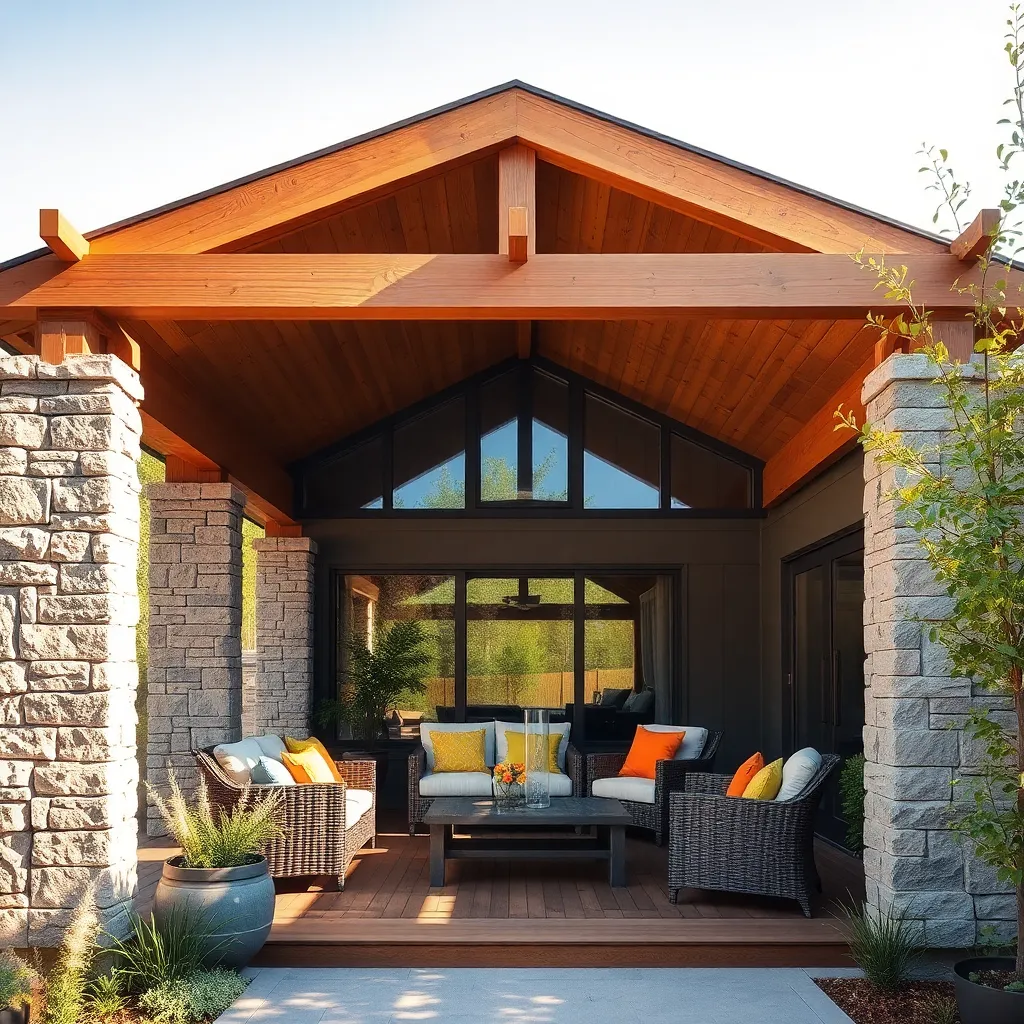
When selecting materials for your outdoor shelter, prioritize those that are durable and weather-proof to ensure longevity and minimal maintenance. Opt for pressure-treated wood, which resists rot and insect damage, or consider composite materials that offer the aesthetic of wood without the upkeep. If you’re aiming for a more modern look, metals like aluminum or steel are excellent choices due to their strength and weather resistance. Each of these materials can withstand a variety of climates, making them ideal for diverse regions.
For roofing, choose materials like polycarbonate panels or high-quality metal roofing, both of which provide excellent durability and protection from the elements. Incorporating a slight pitch in your roof design can further enhance water runoff, preventing leaks and extending the life of your shelter. Additionally, using stainless steel or galvanized hardware will help prevent rust and deterioration over time, ensuring your construction remains solid and reliable. With these materials and techniques, your outdoor shelter will not only stand the test of time but also enhance the beauty and functionality of your outdoor space.
Incorporate Natural Ventilation Techniques
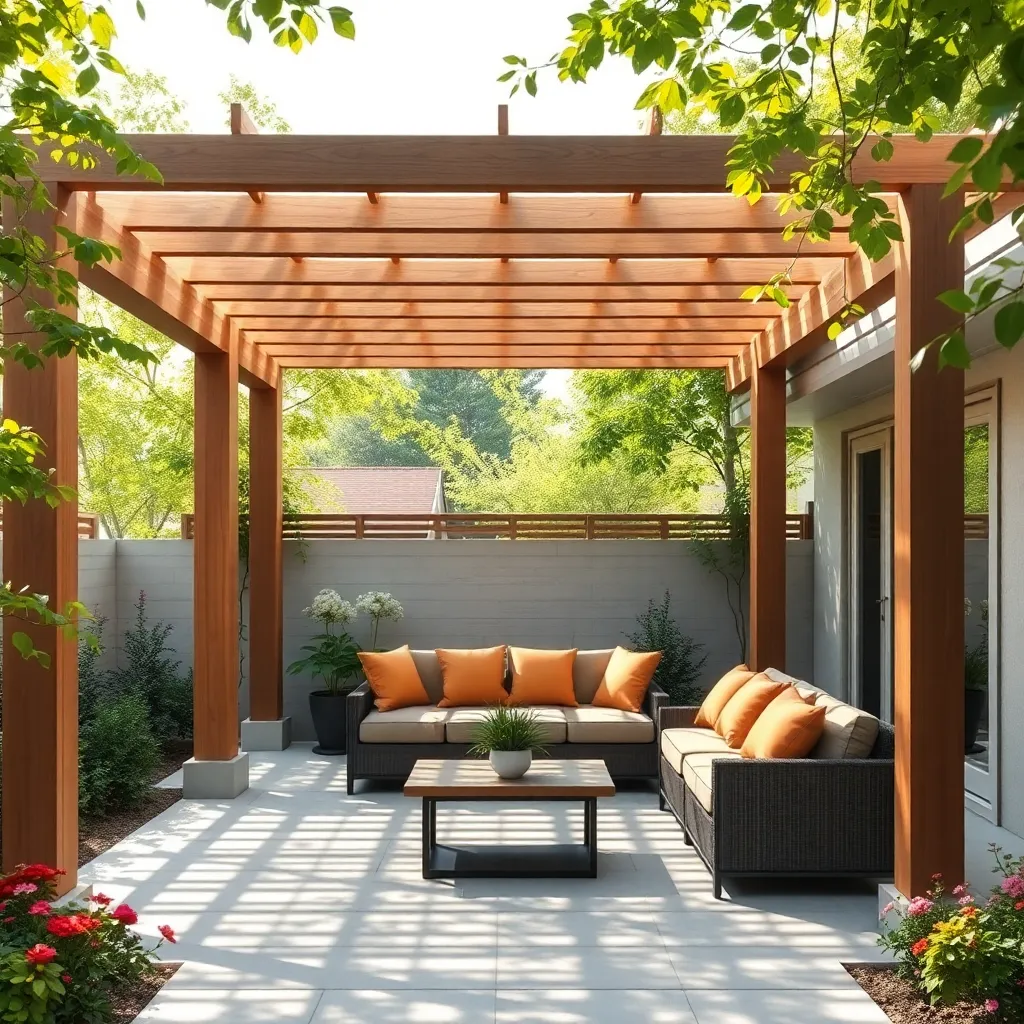
Maximizing natural ventilation in your outdoor shelter not only enhances comfort but also promotes air circulation and reduces humidity. Consider incorporating open-lattice walls or adjustable louvers to allow air to flow freely while still providing shade and privacy. For a more advanced approach, design your shelter with a raised roof or clerestory windows to create a stack effect, allowing hot air to escape from the top while drawing in cooler air from below.
Positioning your shelter strategically can further enhance ventilation. Align it to capture prevailing breezes, typically from the southwest in many regions, to naturally cool the space. For added efficiency, use materials like perforated metal panels or slatted wood, which provide both structural integrity and airflow. These elements not only improve air circulation but also add an aesthetic appeal to your outdoor space, making your shelter both functional and inviting.
Utilize Multi-Functional Furniture Designs
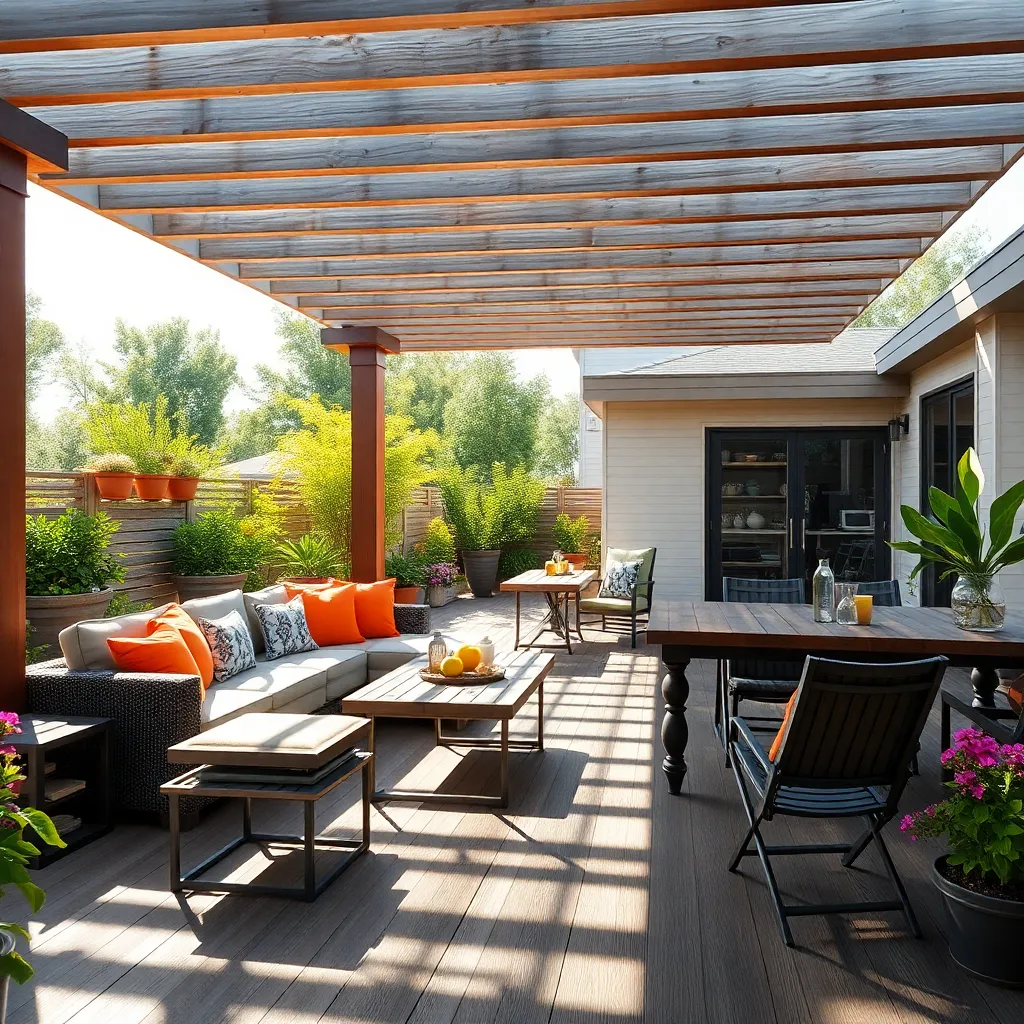
When designing your outdoor shelter, consider incorporating multi-functional furniture to maximize both space and utility. Opt for pieces like a bench that doubles as a storage unit or a table with built-in planters to add greenery while saving space. Look for weather-resistant materials such as teak, eucalyptus, or powder-coated metal, which ensure durability and longevity in all climates. For beginners, starting with a convertible sofa or modular seating can offer flexibility for different occasions and gatherings.
Advanced designers might experiment with custom-built furniture that integrates smart features, such as solar-powered charging stations or retractable components, enhancing the functionality of the outdoor space. Consider incorporating elements like adjustable canopies that can be part of the furniture set to provide shade and shelter as needed. Remember, the key is to create a harmonious balance between aesthetics and practicality, ensuring your outdoor area remains inviting and versatile throughout the year.
Install Eco-Friendly Roofing Options
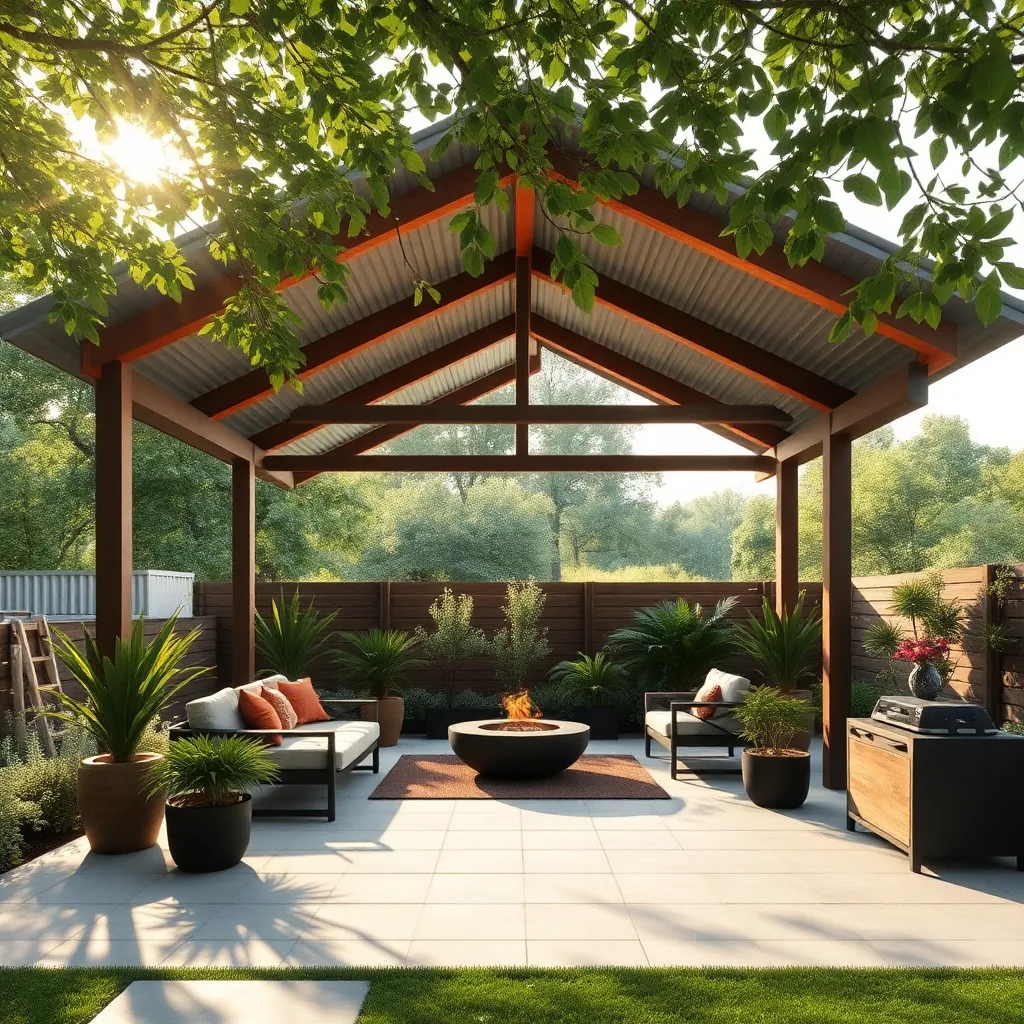
Consider installing eco-friendly roofing options to enhance the sustainability of your outdoor shelter. Opt for materials like recycled metal or reclaimed wood, which not only reduce environmental impact but also offer durability. For a more advanced approach, you can integrate green roofs by planting low-maintenance, drought-resistant plants such as sedums that provide natural insulation and improve air quality. Ensure proper drainage systems are in place to maintain the integrity of these green roof setups.
When choosing your roofing materials, remember that color and design play a crucial role. Lighter-colored roofs can reflect sunlight, keeping your shelter cooler during summer months. Additionally, incorporating solar panels into your design can power outdoor lighting or small appliances, offering a sustainable energy solution. Take advantage of modular roofing systems that allow for easy installation and future expansions, making them perfect for both beginners and experienced DIY enthusiasts looking to enhance their outdoor spaces.
Create Shade With Retractable Awnings
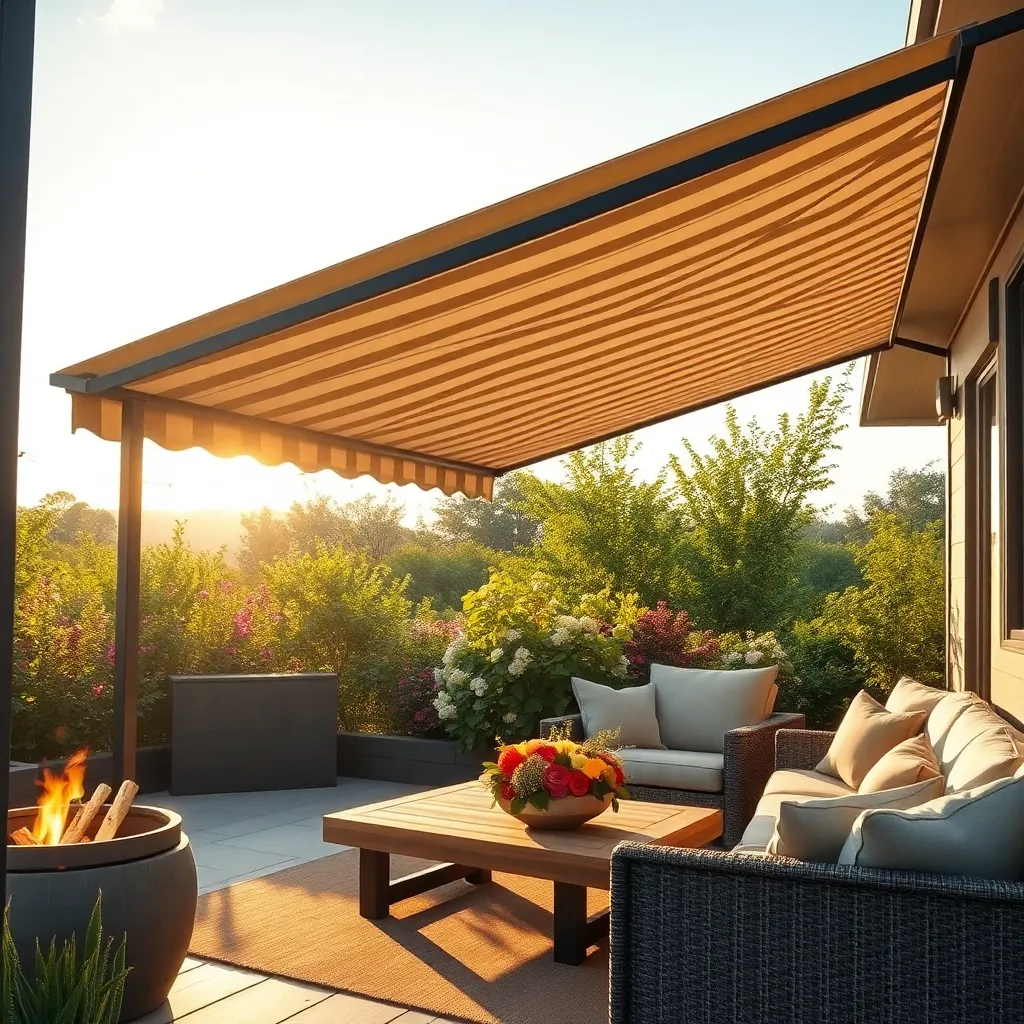
Retractable awnings offer a versatile way to create shade in your outdoor spaces while adding a stylish element to your home. To get started, consider durable materials like acrylic or polyester fabrics that can withstand various weather conditions. For a sleek installation, opt for aluminum frames, which are both lightweight and resistant to rust, ensuring longevity. As you plan your project, think about the dimensions of your outdoor area—awnings typically extend 10 to 13 feet, providing ample coverage without overwhelming the space.
For beginners, installing a motorized retractable awning can simplify the process, allowing for easy operation at the touch of a button. More experienced DIYers might enjoy the challenge of installing a manually operated system, which can be more cost-effective. Keep in mind key features like integrated LED lighting and wind sensors that automatically retract the awning during high winds for added safety and convenience. By choosing the right design and features, you not only enhance your outdoor living area but also increase the value of your home.
Enhance Privacy Using Green Walls
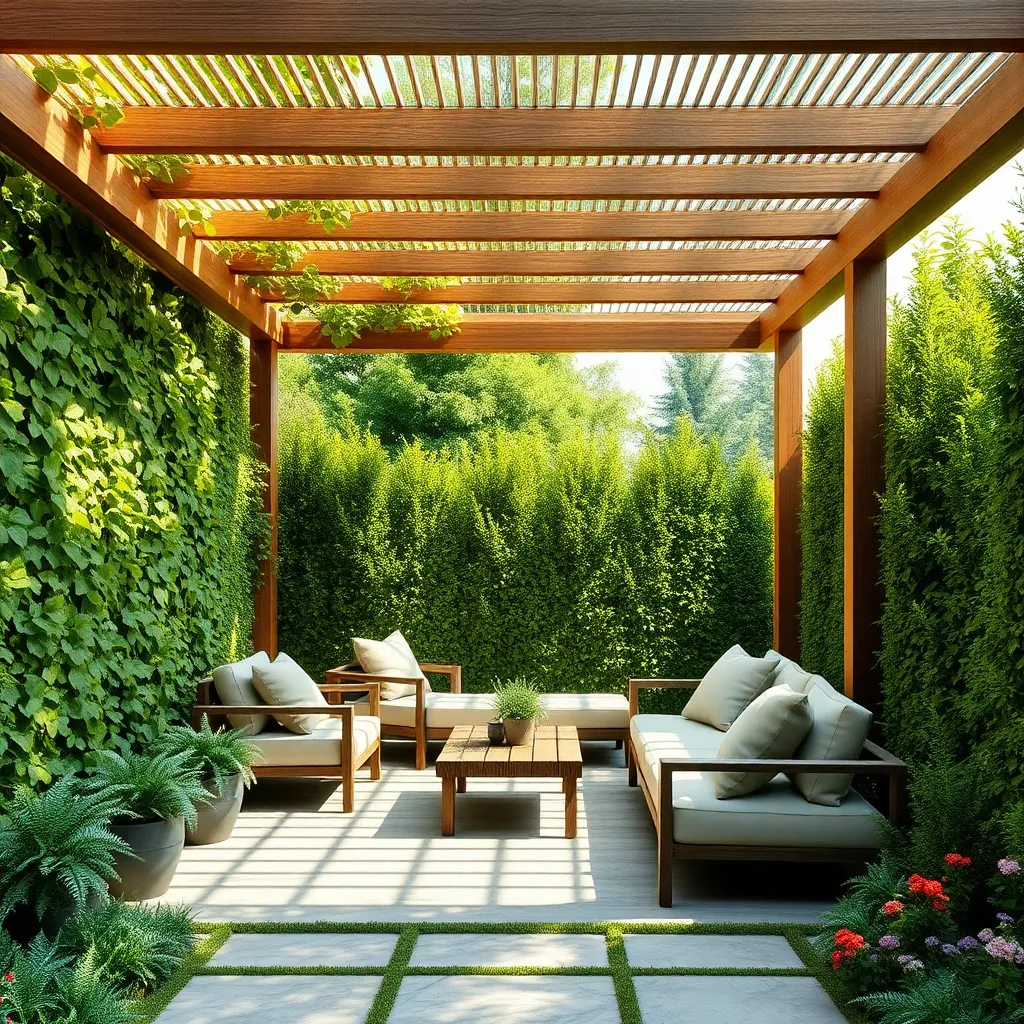
Transform your outdoor space into a private oasis by incorporating green walls. These living structures not only provide privacy but also enhance the natural beauty of your garden. Start by selecting fast-growing climbers such as ivy, jasmine, or honeysuckle that will quickly cover wire frames or trellises. For a more structured look, consider using vertical planters with a mix of herbs and flowering plants. Ensure the support structures are sturdy and weather-resistant to withstand the elements and provide long-lasting privacy.
For those already familiar with gardening, experiment with a mix of evergreen and deciduous plants to maintain year-round coverage and seasonal interest. Use drip irrigation systems to efficiently water your green wall, ensuring even the highest plants receive adequate moisture. Additionally, consider the orientation of your green wall to maximize sun exposure and plant health. By thoughtfully designing your green wall, you can create a lush, private retreat that adds life and vibrancy to your outdoor space.
Optimize Space With Modular Shelters
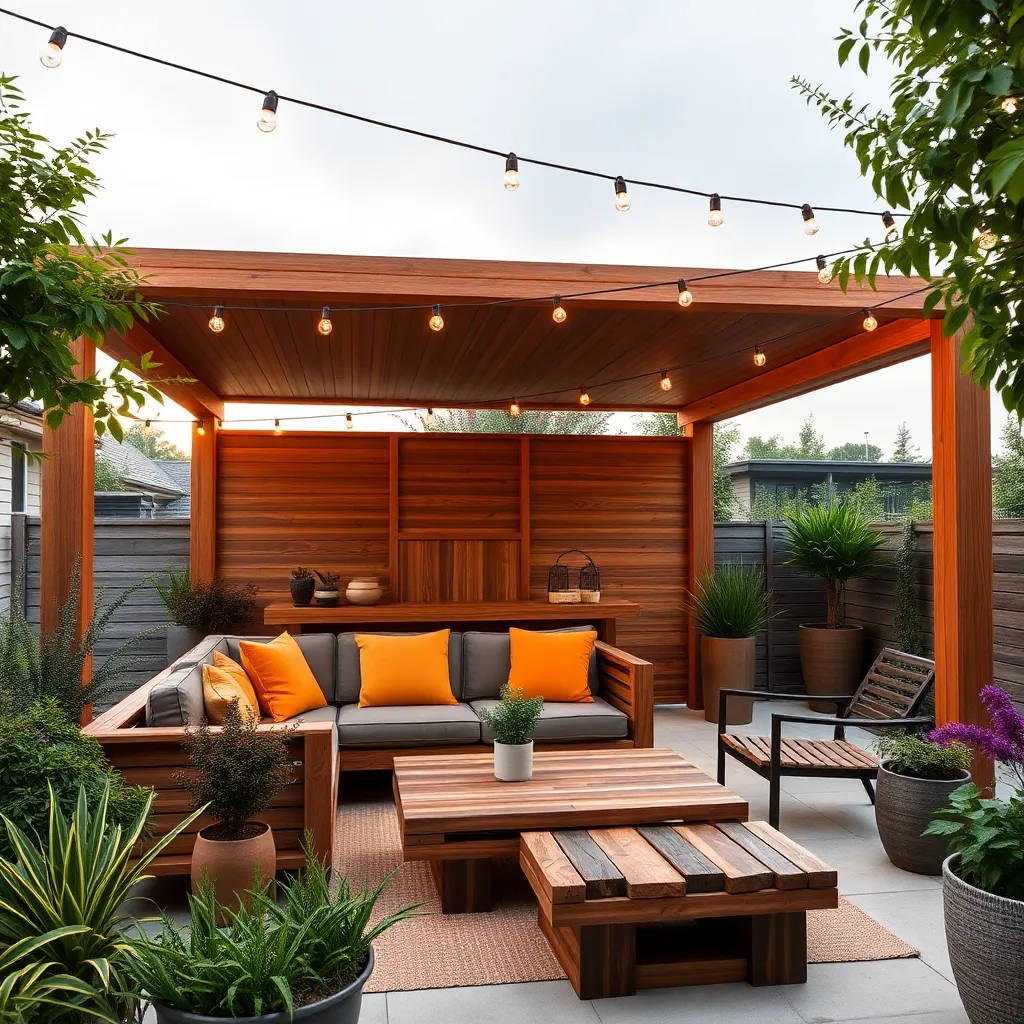
Modular shelters are an excellent solution for optimizing outdoor space, offering flexibility, ease of installation, and versatility. These structures can be customized to fit any backyard size, from compact urban gardens to expansive rural properties. Consider materials like weather-resistant wood, aluminum, or prefabricated panels to ensure longevity. For a basic setup, start with a simple modular kit that includes essential components like roof panels and side walls, allowing you to expand later as needed.
For those looking to create a more sophisticated outdoor retreat, consider integrating features such as sliding glass doors or adjustable louvers for added functionality. Advanced DIY enthusiasts can enhance the structure with built-in seating or storage, maximizing utility without sacrificing space. To further personalize your modular shelter, use a color palette that complements your existing outdoor decor. Whether you’re a beginner or an experienced builder, these adaptable shelters make it easy to tailor your space to meet your unique needs and style.
Select Sustainable Building Materials
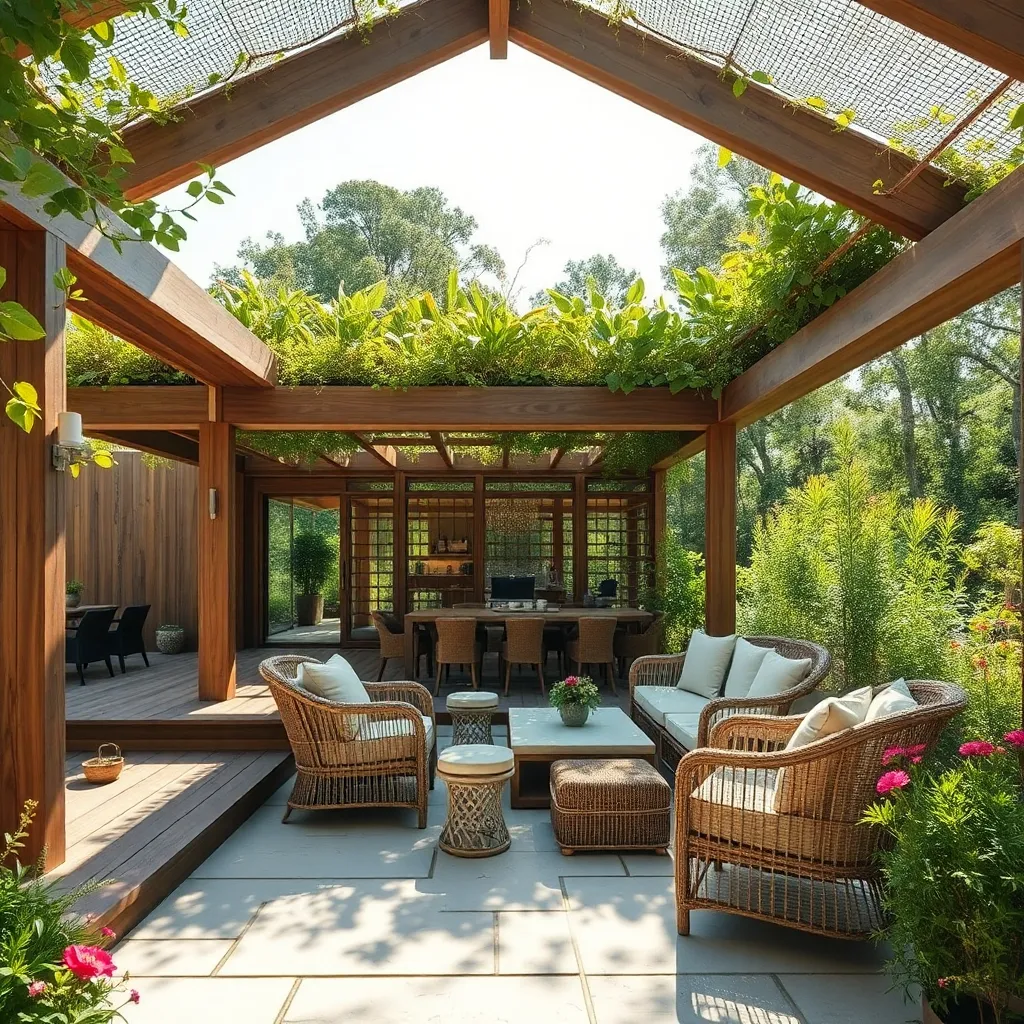
Choosing sustainable building materials for your outdoor shelter not only benefits the environment but also enhances durability and aesthetics. Consider using reclaimed wood for a rustic look, which is both eco-friendly and full of character. Other sustainable options include bamboo, which is fast-growing and incredibly strong, or recycled metal for modern, sleek designs. These materials provide a solid foundation while maintaining a low environmental impact, making them ideal for any eco-conscious homeowner.
When planning your project, it’s important to consider the longevity and maintenance of your chosen materials. For instance, locally sourced stone can be a beautiful, low-maintenance option that blends seamlessly with natural surroundings. If you’re in a region with harsh weather, opt for materials with high weather-resistance such as composite decking or treated timber. For more advanced builders, integrating solar panels into your shelter design can further enhance sustainability while reducing energy costs. By selecting the right materials, you create a shelter that’s not only stylish and functional but also kind to the planet.
Add Solar-Powered Lighting Systems
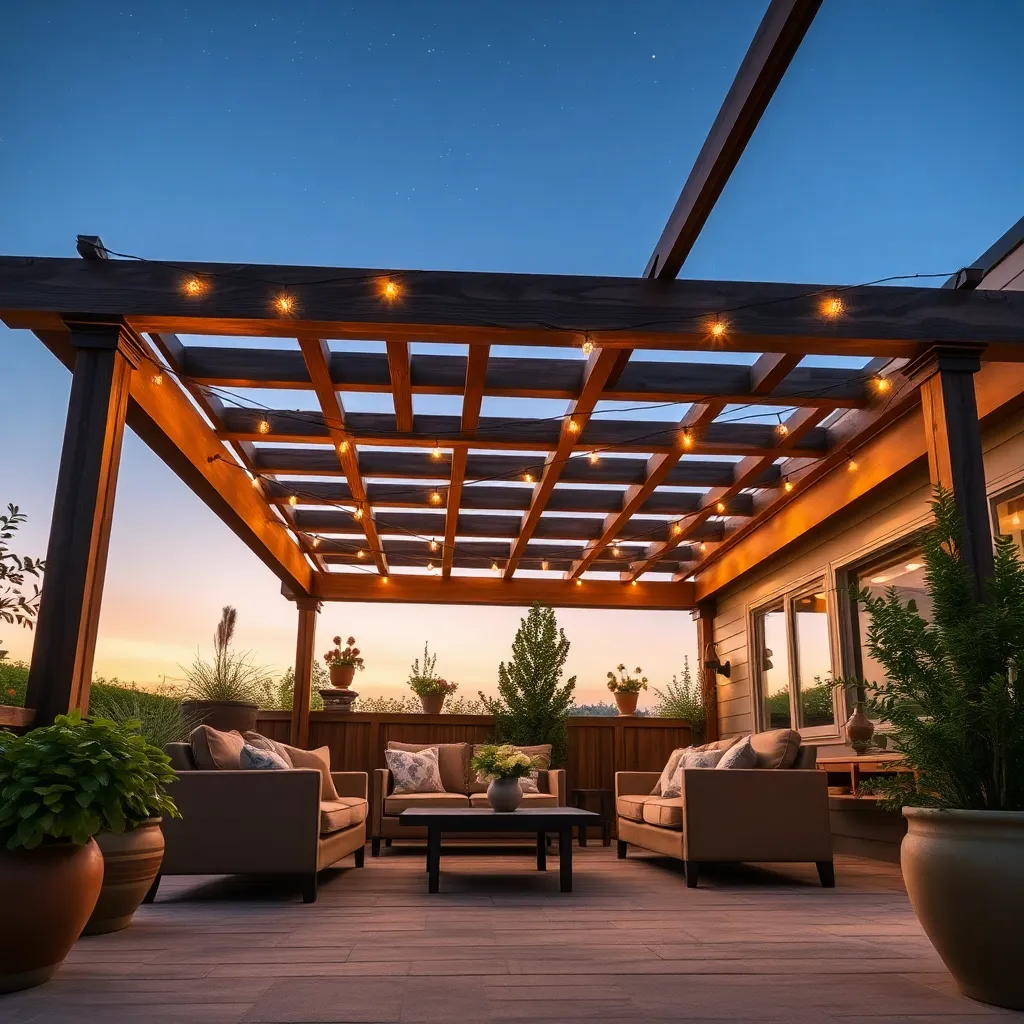
Integrating solar-powered lighting systems into your outdoor shelter not only enhances its usability but also promotes sustainability. Consider installing solar panel lights along the edges or roof of the shelter to capture maximum sunlight during the day. These lights will automatically illuminate your space at night, providing a warm and inviting atmosphere. For beginners, start with easy-to-install solar string lights that require no wiring. Simply hang them around the perimeter or weave them through overhead beams for a charming effect.
For more advanced projects, you might explore integrating solar lanterns or spotlights to highlight key areas of your shelter, such as seating zones or pathways. Choose models with adjustable panels and high-efficiency LEDs to maximize light output while minimizing energy consumption. Position solar panels in areas with direct sunlight exposure, ideally facing south in the Northern Hemisphere, to ensure optimal performance. By opting for solar-powered lighting, you not only reduce your carbon footprint but also add a modern, eco-friendly touch to your outdoor haven.
Design With Wind-Resistant Features
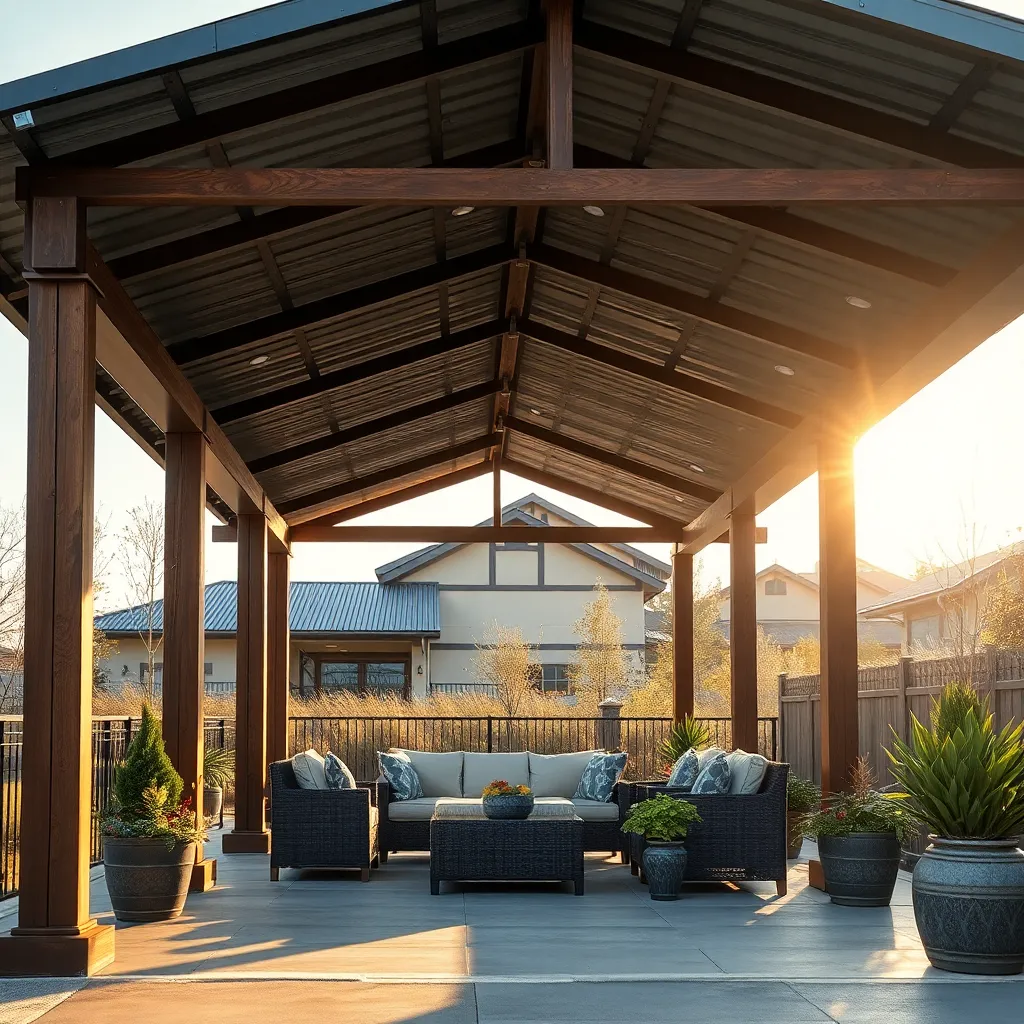
When designing an outdoor shelter to withstand wind, consider using sturdy materials like pressure-treated wood, steel, or reinforced aluminum. These materials are not only durable but also capable of withstanding strong gusts. Incorporating windbreaks such as strategically placed walls or natural elements like hedges can further enhance the wind resistance of your shelter. For beginners, a simple lattice windbreak with climbing plants can add both functionality and aesthetic appeal.
For more advanced wind-resistant designs, consider using anchoring techniques like concrete footings to secure the structure firmly to the ground. Roof design also plays a crucial role; a pitched or gabled roof can help deflect wind more effectively than a flat one. Additionally, integrating cross-bracing in the frame can significantly improve stability. Always ensure that any fabric used, such as in pergolas or awnings, is tightly secured to prevent flapping or damage.
Ensure Proper Drainage Solutions
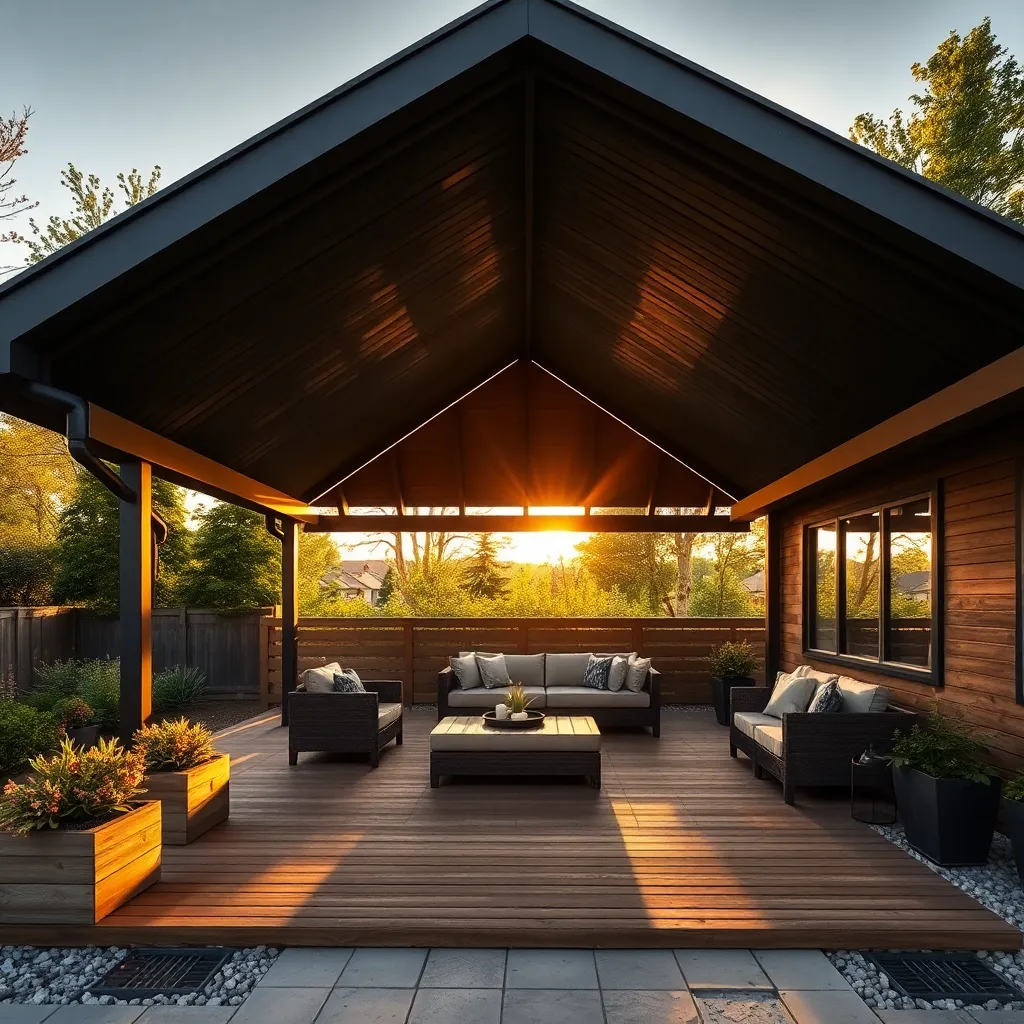
When planning your outdoor shelter, ensuring proper drainage is crucial to prevent water accumulation and potential damage. Start by evaluating the natural slope of your yard; ideally, the shelter should sit on a slight incline to encourage water runoff. For flat areas, consider installing a French drain or using permeable paving materials like gravel or porous concrete under the shelter to help manage water flow effectively.
To enhance drainage further, incorporate gutters and downspouts into your shelter design, directing water away from the foundation. Additionally, use landscaping elements such as rain gardens or swales to naturally redirect excess water. These features not only protect your structure but also contribute to a healthier, more sustainable yard environment. By integrating these practical drainage solutions, you’ll ensure your outdoor space remains dry and functional year-round.
Integrate Seamless Indoor-Outdoor Flow

Creating a seamless indoor-outdoor flow can enhance your living space and make your outdoor shelter feel like a natural extension of your home. Start by selecting similar flooring materials for both the inside and outside areas to create visual continuity. For instance, using weather-resistant tiles or composite decking that matches your indoor flooring will help blur the boundaries, making the transition feel effortless. Incorporate large, sliding glass doors or bi-fold doors to open up the space, allowing for an uninterrupted view and easy access between the two areas.
To elevate your design, consider adding consistent color palettes and decor themes across both indoor and outdoor spaces. Choose outdoor furniture that complements your interior style, such as sleek metal or natural teak pieces that mirror your indoor furnishings. For a more advanced approach, install an outdoor kitchen or bar area that aligns with your indoor kitchen setup, ensuring the functionality is extended outdoors. Adding elements like retractable awnings or pergolas with adjustable louvers can further integrate the spaces by offering flexible shade options that adapt to changing weather conditions.
Conclusion: Creating Beautiful Outdoor Spaces
In exploring the ’12 Outdoor Shelter Ideas for Your Next Project,’ we’ve ventured into key relationship concepts that mirror the foundations of building a haven of love and connection. From ‘Communication Cabins’ that foster open dialogue to ‘Trust Tents’ that offer security, each idea serves as a metaphor for nurturing a resilient relationship. We’ve also touched on ‘Commitment Cottages’ and ‘Empathy Gazebos’—structures that underscore the importance of dedication and understanding.
To transform these insights into action, consider planning a small project with your partner, like creating a cozy outdoor space or even organizing a simple picnic. This collaborative effort can strengthen your bond, much like building a shelter.
As you embark on this journey, be sure to bookmark this article. It will serve as a valuable resource, guiding you back to these foundational concepts whenever needed. Remember, by investing time and effort into your relationship today, you’re laying the groundwork for a successful and fulfilling future together.
Your relationship is a living, breathing structure, always ready for improvements and innovations. Let these ideas be your blueprint for success, empowering you to create the love story you desire.
